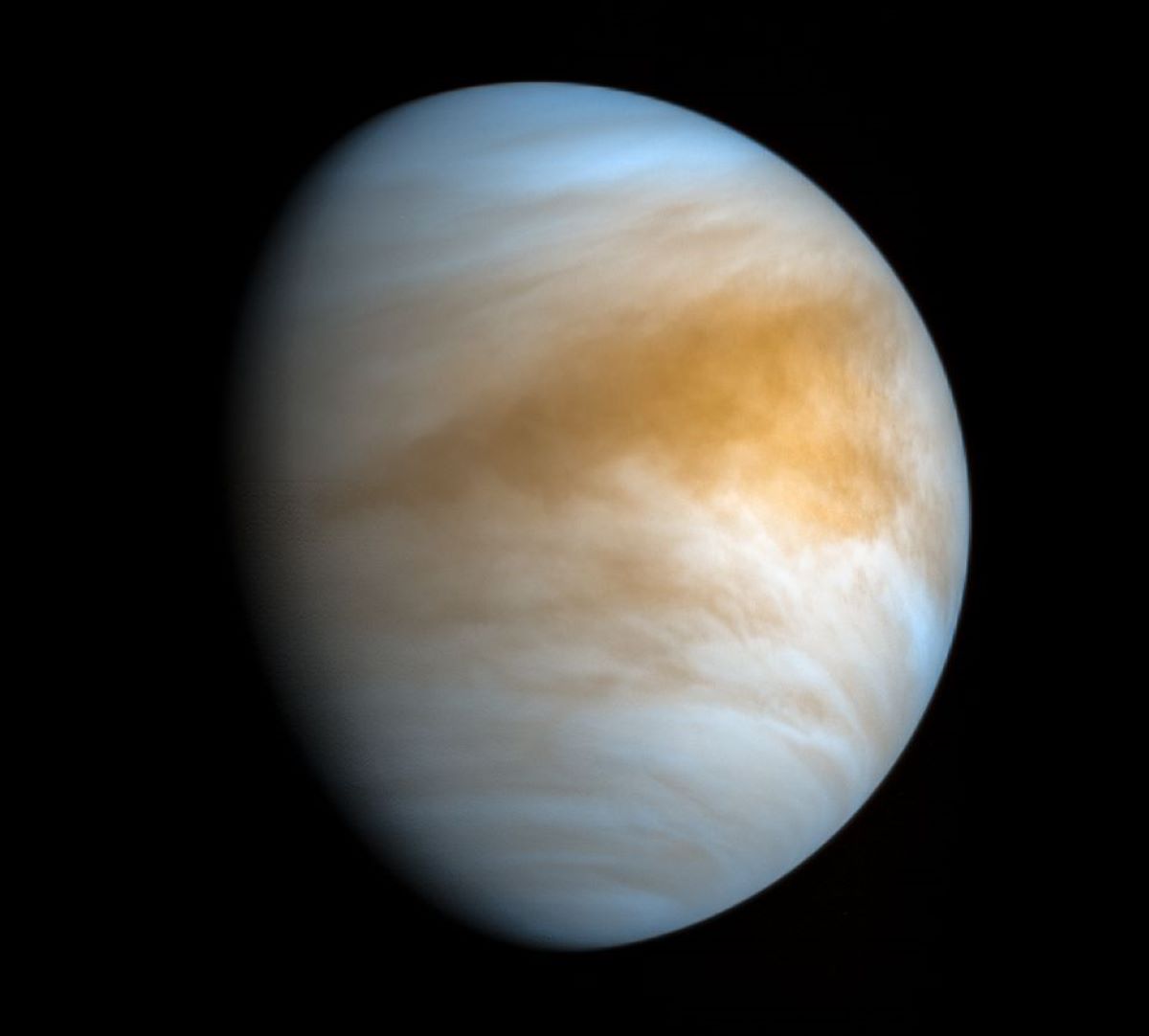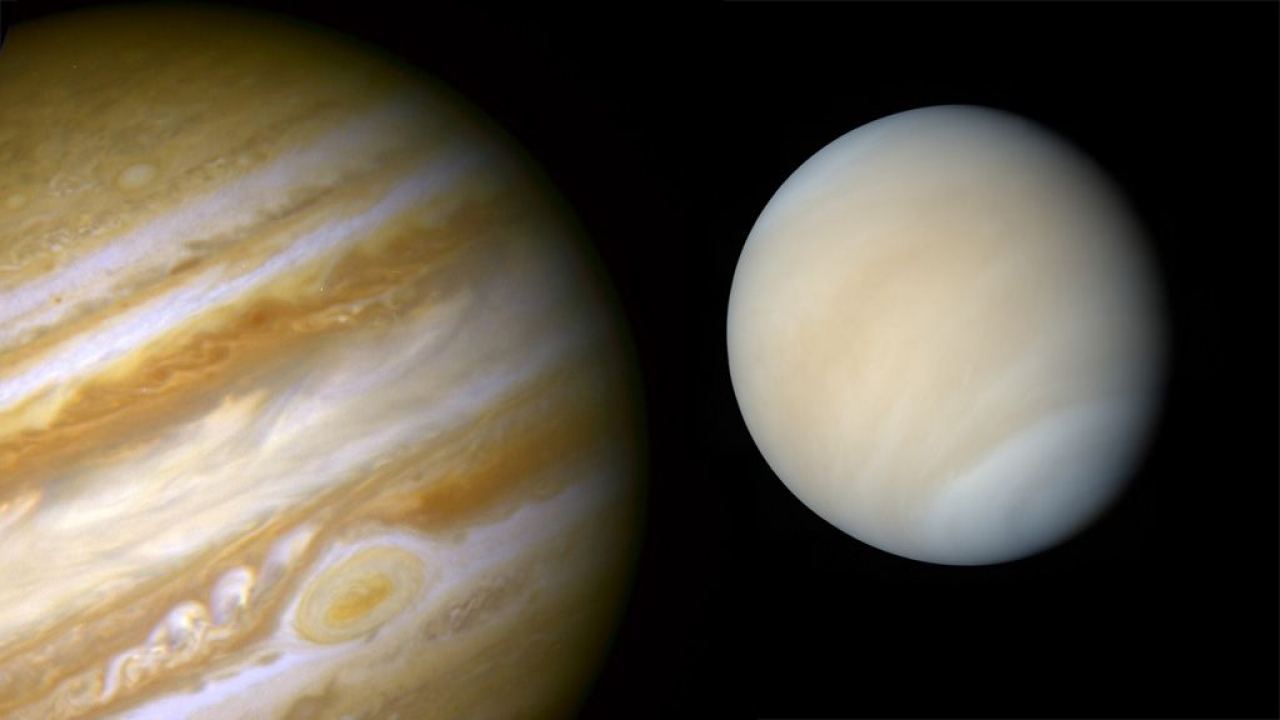Home>Gardening News and Trends>Which Planet Has A Runaway Greenhouse Effect


Gardening News and Trends
Which Planet Has A Runaway Greenhouse Effect
Modified: January 22, 2024
Discover the latest news on the runaway greenhouse effect on different planets, including which one experiences it and its alarming impact. Stay updated with the latest developments in planetary science.
(Many of the links in this article redirect to a specific reviewed product. Your purchase of these products through affiliate links helps to generate commission for Chicagolandgardening.com, at no extra cost. Learn more)
Table of Contents
Introduction
The greenhouse effect is a natural phenomenon that plays a crucial role in maintaining the Earth’s temperature within a habitable range. However, in recent years, scientists have been studying the possibility of a runaway greenhouse effect, which could have catastrophic consequences for a planet’s climate and its potential to support life.
Understanding the runaway greenhouse effect is not only important for our understanding of Earth’s climate but also for exploring other planets and exoplanets. By studying the conditions on other celestial bodies, we can gain insights into the potential risks and challenges that a runaway greenhouse effect may pose.
In this article, we will explore the concept of the greenhouse effect and delve into the fascinating world of planets with runaway greenhouse effects. We will primarily focus on Venus, a planet located closest to Earth in our solar system, and examine the comparisons and potential implications for other planets and exoplanets.
From the scorching temperatures on the surface of Venus to the delicate equilibrium of Earth’s climate system, the quest to understand the runaway greenhouse effect takes us on an astronomical journey. So strap yourself in and get ready to explore the intriguing world of runaway greenhouse effects and their impact on planets.
What is the greenhouse effect?
The greenhouse effect is a natural process that regulates the temperature of a planet by trapping heat in its atmosphere. It is essential for supporting life as we know it on Earth. The primary drivers of the greenhouse effect are gases in the atmosphere called greenhouse gases, such as carbon dioxide (CO2), methane (CH4), and water vapor (H2O).
When sunlight reaches the Earth’s surface, it warms the surface and then radiates heat back into the atmosphere. Greenhouse gases in the atmosphere absorb some of this outgoing heat, preventing it from escaping into space. This trapped heat is then re-radiated in all directions, including back towards the surface of the planet, creating a warming effect.
Without the greenhouse effect, the Earth’s average temperature would be around -18 degrees Celsius (0 degrees Fahrenheit). However, human activities, primarily the burning of fossil fuels, have significantly increased the concentration of greenhouse gases in the atmosphere, enhancing the greenhouse effect. This has led to an increase in the Earth’s average temperature, known as global warming.
The greenhouse effect is crucial for maintaining a stable climate. It ensures that the Earth’s surface is warm enough for liquid water to exist, which is essential for supporting life. However, an excessive increase in greenhouse gases can intensify the greenhouse effect, resulting in a runaway greenhouse effect.
A runaway greenhouse effect occurs when the warming caused by the greenhouse gases becomes self-perpetuating and uncontrollable. It leads to a continuous increase in temperature, which can have disastrous consequences for a planet’s climate system and make it uninhabitable.
Now that we have a basic understanding of the greenhouse effect, let us explore the search for a runaway greenhouse effect and its implications on different planets and exoplanets.
The search for a runaway greenhouse effect
Scientists have been studying planets within our solar system to understand the conditions that can lead to a runaway greenhouse effect. By studying the atmospheres and climate systems of these planets, researchers aim to gain insights into the potential risks and challenges associated with a runaway greenhouse effect.
One of the primary focuses of this research has been Venus, often referred to as Earth’s “evil twin.” Venus is similar in size and composition to our planet, but it is shrouded in a thick atmosphere composed mainly of carbon dioxide. The intense greenhouse effect on Venus has caused the surface temperatures to soar to a scorching 900 degrees Fahrenheit (475 degrees Celsius).
By examining the extreme conditions on Venus, scientists are able to better understand the factors that contribute to a runaway greenhouse effect. The presence of a dense atmosphere and the high concentration of greenhouse gases are key factors in trapping heat and leading to the runaway greenhouse effect on Venus.
However, it is important to note that not all planets with a significant greenhouse effect will necessarily experience a runaway effect. Each planet has its own unique set of conditions, including its distance from the sun, composition of the atmosphere, and the presence of other factors such as oceans and volcanic activity.
Researchers also look at our own planet, Earth, in their quest to understand the runaway greenhouse effect. While Earth’s greenhouse effect is currently in balance, the increasing levels of greenhouse gases due to human activities pose a potential risk. By monitoring and studying our own climate system, scientists can make informed predictions about the consequences of an intensified greenhouse effect.
These studies are not limited to our solar system alone. With the discovery of thousands of exoplanets in recent years, scientists have expanded their search for potential runaway greenhouse effects to distant planets orbiting other stars. By analyzing the data obtained from telescopes and space probes, researchers can estimate the atmospheric compositions and surface conditions of exoplanets to determine if they may be susceptible to a runaway greenhouse effect.
The search for a runaway greenhouse effect is driven by the desire to better understand the mechanisms that govern climate systems and the potential environmental challenges that may arise on planets both within and outside our solar system. The knowledge gained from these studies can help us make informed decisions about our own planet’s future and inform our search for habitable environments beyond Earth.
Venus: The planet with a runaway greenhouse effect
Venus, the second planet from the Sun, is often referred to as Earth’s “evil twin” due to its similar size and composition. However, Venus’s climate is radically different from Earth’s, with a runaway greenhouse effect that has made it an inhospitable world.
The extreme greenhouse effect on Venus is primarily attributed to its dense atmosphere, consisting predominantly of carbon dioxide. The high concentration of greenhouse gases traps heat, resulting in blistering surface temperatures averaging around 900 degrees Fahrenheit (475 degrees Celsius).
The surface conditions on Venus are hostile, with thick clouds of sulfuric acid, crushing atmospheric pressure, and intense volcanic activity. The thick atmosphere generates a powerful greenhouse effect, preventing any heat from escaping. This feedback loop perpetuates the warming, creating a perpetual cycle of escalating temperatures.
The runaway greenhouse effect has also led to the complete loss of liquid water on Venus. Any water that may have existed in the past has evaporated and dissociated into hydrogen and oxygen. The high temperatures combined with the lack of a protective magnetic field have allowed the solar wind to strip away the lighter hydrogen atoms, leaving a desolate, arid planet.
Studying Venus provides valuable insights into the conditions that can trigger a runaway greenhouse effect. The extreme heat and uninhabitable environment serve as a cautionary tale, reminding us of the delicate balance that exists in Earth’s climate system.
Despite the inhospitable conditions on Venus, scientists continue to explore the planet using space probes. These missions help to further our understanding of Venus’s atmosphere, its composition, and the complex interactions between its climate systems. By studying the unique geologic features, such as impact craters, volcanoes, and lava flows, scientists gain valuable data about the planet’s history, allowing them to model potential climate scenarios.
Understanding the runaway greenhouse effect on Venus is not only important for studying other planets in our solar system, but also for assessing the potential implications for our own planet. As we strive to mitigate human-induced global warming, the case of Venus serves as a reminder of the catastrophic consequences that can arise from an unchecked greenhouse effect.
While Earth is not currently experiencing a runaway greenhouse effect, the lessons learned from Venus provide valuable insights into the delicate balance of our climate system. By studying Venus, scientists can develop better models and strategies to predict and mitigate the potential risks associated with an intensified greenhouse effect on Earth.
Earth: Potential risks and comparisons
While Earth is not currently experiencing a runaway greenhouse effect like Venus, it is important to understand the potential risks and comparisons that can shed light on the delicate balance of our planet’s climate system.
Human activities, particularly the burning of fossil fuels and deforestation, have significantly increased the concentration of greenhouse gases in Earth’s atmosphere. This has led to a warming trend, commonly known as global warming, which poses various risks to our planet’s climate and ecosystems.
One of the primary concerns is the melting of ice caps and glaciers, leading to rising sea levels. This can result in the loss of coastal areas, increased flooding, and the displacement of populations living in low-lying regions. Furthermore, the intensification of extreme weather events such as hurricanes, droughts, and heatwaves poses threats to human lives, infrastructure, agriculture, and biodiversity.
Comparing Earth to Venus, we can identify key differences that prevent Earth from experiencing a runaway greenhouse effect. The presence of oceans on Earth plays a crucial role in regulating temperature through the absorption and release of heat. Additionally, Earth’s moderate distance from the Sun allows for a suitable temperature range that supports a diverse range of life forms.
However, the alarming increase in greenhouse gas concentrations, particularly carbon dioxide, poses a significant risk to Earth’s climate stability. It is crucial for us to address and mitigate the causes of global warming to avoid any future destabilization of Earth’s climate system.
Efforts are being made to reduce greenhouse gas emissions through the adoption of cleaner and more sustainable energy sources, conservation practices, and international agreements such as the Paris Agreement. These initiatives aim to limit global warming to well below 2 degrees Celsius above pre-industrial levels, as exceeding this threshold could have catastrophic consequences for our planet.
By studying the potential risks and comparing Earth’s climate system to that of Venus, scientists can gain valuable insights into the impacts of an intensified greenhouse effect. This knowledge fuels efforts to better understand and address climate change, ultimately safeguarding the planet for future generations.
As we continue to observe and study the conditions on Earth and other planets, we gain a deeper understanding of the delicate balance required for habitability. It is our collective responsibility to take action and make sustainable choices to protect our planet from the risks associated with a runaway greenhouse effect.
Other planets in the solar system
While Venus stands out as the prime example of a planet with a runaway greenhouse effect, other planets in our solar system also provide valuable insights into the dynamics of greenhouse effects.
Mars, for example, has a thin atmosphere consisting mainly of carbon dioxide. Although the greenhouse effect on Mars is not as pronounced as on Venus, it still contributes to the planet’s climate. However, other factors, such as its distance from the Sun and limited atmospheric mass, have led to Mars having a cold and dry environment. The thin atmosphere, unable to trap enough heat, results in temperatures averaging around -80 degrees Fahrenheit (-60 degrees Celsius).
Jupiter and Saturn, the gas giants of our solar system, have atmospheres primarily composed of hydrogen and helium. Although these planets do not have a runaway greenhouse effect like Venus, their atmospheric compositions and immense sizes contribute to extreme temperatures and pressure gradients.
On the other hand, some moons in our solar system, such as Titan and Enceladus of Saturn, exhibit unique characteristics related to the greenhouse effect. Titan has a thick atmosphere consisting mostly of nitrogen with traces of methane and ethane. The greenhouse effect on Titan, driven by the presence of methane, leads to relatively higher temperatures compared to what would be expected based solely on its distance from the Sun.
Beyond our solar system, the observations of exoplanets have opened up new possibilities for understanding greenhouse effects in diverse environments. These planets, located in other star systems, provide scientists with a broader range of atmospheric compositions and conditions to study.
By studying the range of greenhouse effects and climate systems across different planets in our solar system and beyond, scientists are able to better understand the underlying mechanisms and factors that influence the habitability of a planet. This knowledge not only deepens our understanding of our own planet but also informs our search for habitable environments and potential life in the universe.
As technology advances and new discoveries are made, our knowledge of the ever-expanding galaxies and planetary systems will continue to expand. With each new finding, we move closer to unraveling the mysteries of the universe and uncovering the secrets of the runaway greenhouse effect on Earth and beyond.
Potential implications for exoplanets
The study of planets with runaway greenhouse effects in our solar system has significant implications for understanding exoplanets – planets that orbit stars outside our solar system. The exploration of exoplanets offers a glimpse into the diverse range of climate systems and atmospheric compositions that exist in the universe.
Researchers use various methods, such as transit observations and spectroscopy, to analyze exoplanet atmospheres and assess the potential for greenhouse effects. These studies aim to identify the presence of greenhouse gases and evaluate their impact on the planet’s climate and habitability.
By comparing the characteristics of exoplanets to those in our solar system, scientists can make informed predictions about the potential for runaway greenhouse effects beyond our cosmic neighborhood. This knowledge is crucial in identifying potentially habitable exoplanets and understanding their potential for supporting life.
For example, if an exoplanet is found to have a dense atmosphere and high concentrations of greenhouse gases, such as carbon dioxide, it may indicate the possibility of a runaway greenhouse effect. This, in turn, suggests a high likelihood of extreme temperatures and an inhospitable environment.
On the other hand, the absence or low levels of greenhouse gases on an exoplanet may indicate a more stable climate and greater potential for habitability. These planets, located within their star’s habitable zone – the region where conditions could allow for the presence of liquid water – hold particular interest for scientists in the search for extraterrestrial life.
One of the exciting missions contributing to the exploration of exoplanets is the James Webb Space Telescope (JWST), scheduled for launch in late 2021. The JWST will provide unprecedented insights into exoplanet atmospheres, allowing scientists to study their compositions and search for signatures of greenhouse gases.
Understanding the potential implications of a runaway greenhouse effect on exoplanets helps astronomers refine their search for habitable environments and detect potential signs of life in the universe. It also guides future space missions and the development of new technologies to study exoplanet atmospheres with greater precision and accuracy.
As our understanding of exoplanets continues to evolve, we draw upon the knowledge gained from studying runaway greenhouse effects within our solar system. The exploration of exoplanets opens up new possibilities for exploring the diversity of climates, atmospheres, and potential habitable environments across the vast reaches of space.
Conclusion
The study of runaway greenhouse effects provides valuable insights into the delicate balance that exists within a planet’s climate system. By examining planets like Venus with its extreme greenhouse effect, scientists gain a deeper understanding of the factors that contribute to a runaway greenhouse effect and its consequences.
While Earth is not experiencing a runaway greenhouse effect at present, the increasing concentration of greenhouse gases due to human activities poses a significant risk to our planet’s climate stability. By studying our own climate system and comparing it to other planets in our solar system, we can develop strategies to mitigate the potential risks associated with an intensified greenhouse effect.
The search for exoplanets and the analysis of their atmospheres provide scientists with a broader perspective on greenhouse effects across the universe. By identifying planets with high concentrations of greenhouse gases, researchers can make predictions about the potential for runaway greenhouse effects and assess the habitability of these distant worlds.
Understanding the implications of runaway greenhouse effects guides our efforts towards a sustainable future. By reducing greenhouse gas emissions, developing cleaner energy sources, and adopting conservation practices, we can strive to mitigate the risks associated with an intensified greenhouse effect on Earth.
As technology advances and our knowledge of exoplanets expands, we come closer to unraveling the mysteries of the universe and uncovering the secrets of the runaway greenhouse effect. The exploration of these distant worlds offers a glimpse into the diverse range of climatic conditions and provides valuable insights into the habitability of other planets.
Ultimately, by studying runaway greenhouse effects, we not only deepen our understanding of the complexity of climate systems but also gain a greater appreciation for the delicate balance that allows life to thrive. It is imperative for us to recognize our responsibility in preserving our planet and making sustainable choices to ensure a habitable future for generations to come.






